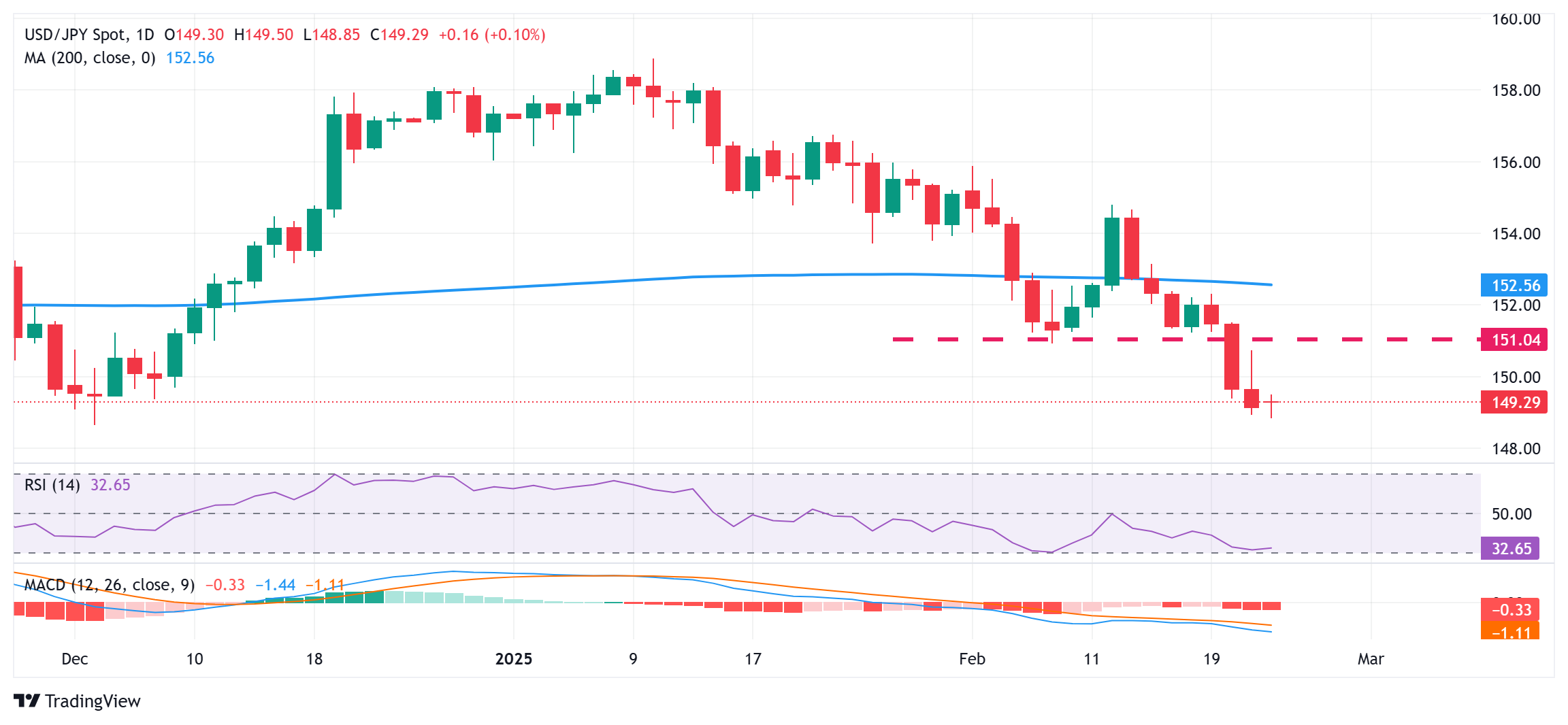The Japanese yen remains on the defensive against the US dollar, with USD/JPY holding firm as the greenback benefits from elevated Treasury yields and cautious sentiment surrounding global economic conditions. However, the yen’s downside potential appears contained, with traders closely watching Bank of Japan (BoJ) policy signals and shifts in broader risk sentiment.
The US dollar continues to find support, driven by higher-for-longer Federal Reserve expectations and persistent uncertainty in global markets. While recent US data suggests some signs of economic slowing, inflation remains a key concern for Fed policymakers, reducing the likelihood of an imminent rate cut. This has helped the dollar maintain its strength, keeping USD/JPY elevated.

USD/JPY 1-D Chart as of February 24th, 2025 (Source: TradingView)
Despite the yen’s weakness, expectations for a BoJ policy shift later this year have provided some support, preventing a deeper decline. Speculation remains that the BoJ could move away from its ultra-loose monetary stance, particularly as inflation in Japan shows signs of stabilization. However, a lack of immediate action has limited the yen’s ability to mount a significant recovery.
Technical indicators suggest that USD/JPY remains in an uptrend, with key resistance levels near 157.00, while downside support is seen around 155.50. A break above resistance could push the pair higher, while any dovish shifts from the Fed or stronger BoJ intervention could trigger a retracement.
Looking ahead, traders will focus on US economic data and central bank commentary, particularly any signals from the BoJ on future rate adjustments. If the Fed maintains a hawkish stance, USD/JPY could continue to trade near recent highs, while stronger Japanese economic data may offer the yen some relief.
For now, the yen remains under pressure, but expectations of a policy shift from the BoJ and broader market dynamics suggest its downside may be limited. Unless US dollar momentum accelerates further, the pair could remain range-bound in the near term.
















